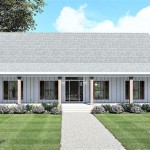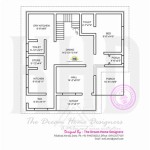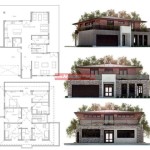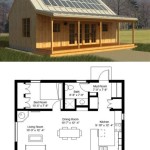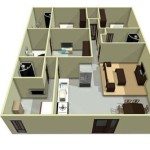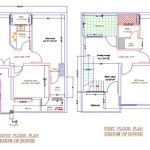Multi-Level Birdhouse Plans
Building a multi-level birdhouse offers an attractive and functional housing solution for various bird species. These structures can accommodate multiple families simultaneously, increasing the avian population in a given area. Careful planning and construction are crucial for ensuring the safety and comfort of the feathered residents. This article will explore the benefits, design considerations, and construction techniques associated with multi-level birdhouse plans.
One primary benefit of multi-level birdhouses is the efficient use of space. A single structure can house multiple families, maximizing the number of birds that can be accommodated within a limited area. This is particularly advantageous in urban environments or areas with limited nesting sites.
Another advantage lies in the potential for attracting a diverse range of bird species. Different bird species have varying preferences for nesting locations and house dimensions. A multi-level design can cater to these diverse needs, providing a variety of compartment sizes and entry hole diameters, attracting a wider range of avian residents.
However, building a multi-level birdhouse presents unique design challenges. Considerations should be given to ventilation, drainage, and ease of cleaning. Proper ventilation is essential for preventing the buildup of heat and moisture, which can be detrimental to the health of the birds and their offspring. Adequate drainage prevents water accumulation within the compartments, protecting nests and eggs from damage.
Design plans must also address ease of cleaning and maintenance. Accessible compartments are essential for removing old nests, parasites, and debris. Hinged roofs or removable panels facilitate access, allowing for thorough cleaning between nesting seasons.
Material selection plays a crucial role in the longevity and effectiveness of the birdhouse. Weather-resistant materials such as cedar, redwood, or exterior-grade plywood are recommended to withstand the elements. Avoid using treated lumber, as the chemicals used in the treatment process can be harmful to birds.
Appropriate compartment dimensions are crucial for attracting specific bird species. Researching the preferred nesting dimensions of target species is essential before beginning construction. The size of the entry hole is also critical, as it determines which species can access the compartment. Different species require different sized entry holes to prevent larger, predatory birds from entering.
The placement of the multi-level birdhouse also requires careful consideration. The structure should be situated in a location that provides protection from predators and harsh weather conditions. Ideally, the birdhouse should be mounted on a sturdy pole or tree, away from branches that could provide access to predators. The orientation of the birdhouse should also be considered, with the entrance holes facing away from prevailing winds and direct sunlight.
Construction of the multi-level birdhouse requires careful planning and accurate measurements. Detailed plans should be consulted throughout the construction process to ensure accurate assembly. Components should be carefully cut and assembled using appropriate fasteners, such as screws or nails. All joints should be sealed with a non-toxic sealant to prevent drafts and moisture penetration.
Prior to mounting the finished birdhouse, it's crucial to conduct a thorough inspection to ensure all components are securely fastened and that the structure is stable. Any sharp edges or protruding nails should be addressed to prevent injury to the birds. Once the inspection is complete, the birdhouse can be mounted in its chosen location.
Regular maintenance is essential for the long-term health and well-being of the avian residents. The birdhouse should be cleaned at least once a year, preferably between nesting seasons. Old nests, debris, and parasites should be removed, and the interior surfaces can be lightly scrubbed with a mild detergent solution. After cleaning, allow the birdhouse to dry thoroughly before reassembling.
Observing the activity around the multi-level birdhouse can be a rewarding experience. Monitoring the species that utilize the structure can provide valuable insights into local bird populations and their nesting preferences. Over time, adjustments to the birdhouse design or placement can be made to further optimize its effectiveness.
Building a multi-level birdhouse offers a unique opportunity to contribute to the conservation of local bird populations. By providing safe and suitable nesting sites, these structures can play a vital role in supporting the health and diversity of avian communities.
Numerous resources are available to assist in planning and constructing a multi-level birdhouse. Online platforms, library resources, and local wildlife organizations can provide detailed plans, material lists, and expert advice. Consulting these resources can enhance the success and enjoyment of the project.

Purple Martin Bird House Plans One Multiple Levels

Articles Purple Martin Place

19 Birdhouse Plans Bluebird Boxes Multi Level Martin Homes And More The Tool Crib

Multi Level Bird House Decorative Houses Plans

Watchesser Com Bird House Plans Free Kits

Purple Martin House Plans Free Printable Diy Directions Projects Patterns Monograms Designs Templates

How To Build A Multi Unit Birdhouse Simple Diy Plans Bird Houses Ideas

How To Build A Multi Unit Birdhouse Simple Diy Plans Feltmagnet

How To Build A Multi Unit Condo Birdhouse Easy Diy Plans Feltmagnet

60 Free Diy Birdhouse Plans Step By Suite 101

